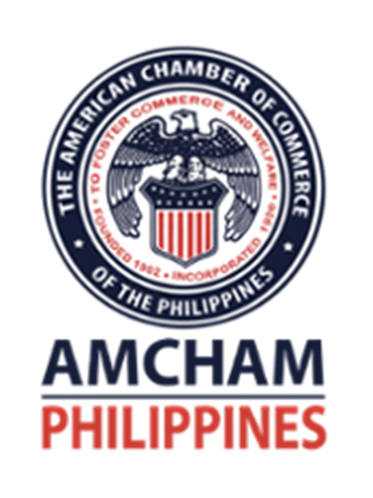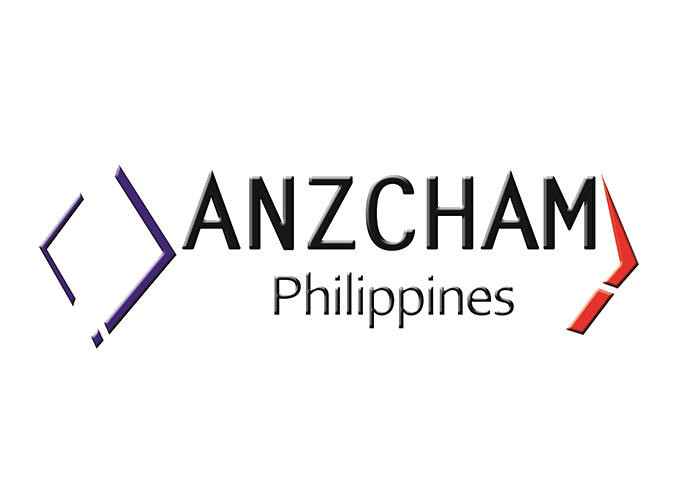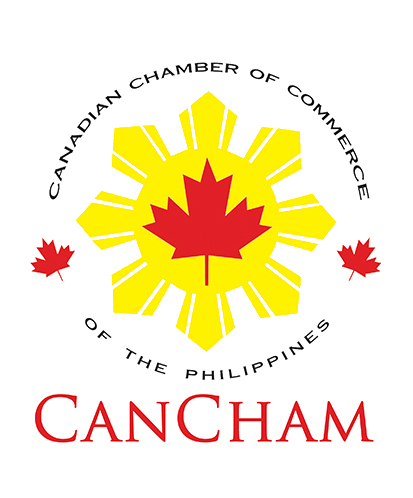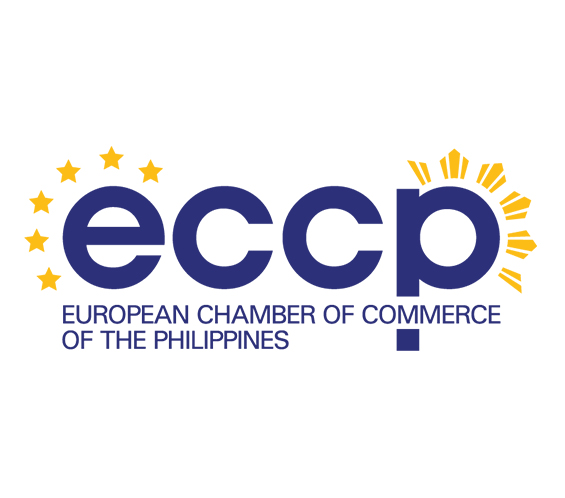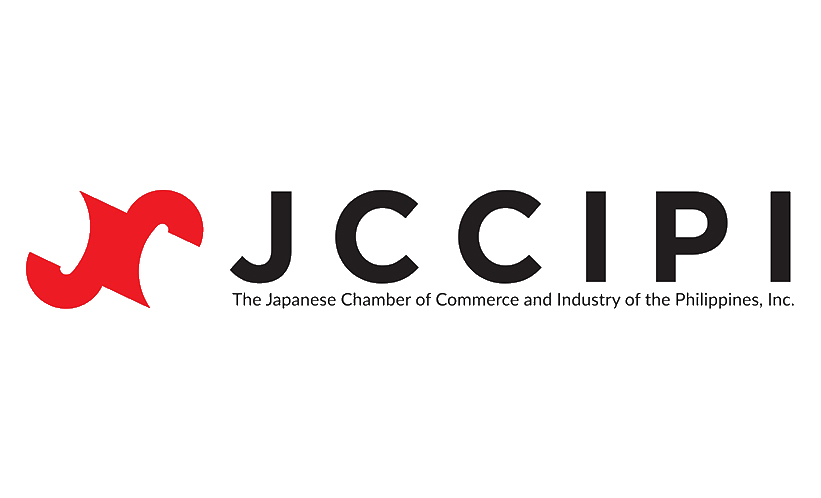Recommendations (TMTR)
Headline Recommendations
- Improve international connectivity – eliminate the Common Carriers Tax and Gross Philippine Billings tax on foreign airlines (not practiced elsewhere); implement 24/7 operations in international airports and seaports; reform the CAAP.
- Develop and implement national and destination masterplans and protect property rights of investors and communities in line with the Tourism Act of 2009. Promotional resources should be directed to key tourist regions with infrastructure and direct international flights, including Cebu/Bohol, Clark/Subic, Davao, Laoag, and Cagayan de Oro.
- Reduce costs of doing business and enhance mobility for travel and tourism enterprises and tourists across the value chain (e.g. implement sustainable tourism taxation (national and local), streamline procedures, travel tax, customs and immigration, licensing, amend Sanitation Code).
- Pursue negotiations of public insurance portability for international medical travel and retirement; promote transparency of medical travel packages; develop and implement a national policy on wellness and medical travel.
- Facilitate seamless travel of medical travelers and health professionals (as part of exchange programs with overseas hospitals) by issuing longer medical tourism visas for patients and their companions and streamlining procedures.
- Restrictions on foreigners should be liberalized in designated tourism and retirement zones to allow foreign ownership of land and retail facilities and the practice of professions. Until the constitutional limit on foreign ownership of land can be reformed, joint ventures with reputable Philippine corporations as well as GRP agencies and LGUs should be encouraged; rules and regulations for JVs with the government should be reviewed accordingly.
- Encourage co-investment by the Philippine Retirement Authority in infrastructure development to support long-stay tourism and retirement programs.
Recommendations (34):
A. Property rights should be facilitated for the new Tourism Enterprise Zones (TEZs) that will be designated under the Tourism Act of 2009 through pre-zoning and titling of lands for tourism development.164 Existing land titles within designated TEZs should be digitized at LGU registry offices. These actions will help investors avoid otherwise lengthy process of land acquisition and conversion. (Immediate action DOT and LGUs)
B. Restrictions on foreigners should be liberalized in designated tourism and retirement zones to allow foreign ownership of land and retail facilities and the practice of professions, such as medicine and nursing. Until the constitutional limit on foreign ownership of land can be reformed, joint ventures with reputable Philippine corporations as well as GRP agencies and LGUs should be encouraged; the rules and regulations for JVs with government should be reviewed accordingly. (Immediate action DOT, DTI, PRC, and LGUs)
C. Rules in the new TEZs should be consistent, simple, and stable and shielded from unnecessary intervention from LGUs. All agencies must share the vision of tourism as a driver for job creation and poverty reduction. There should be One Stop Shops in each TEZ with all relevant government agencies represented, along the lines of the PEZA model, which works closely with the private sector to reduce the time and cost of doing business. (Immediate action DOT/TIEZA and concerned agencies)
D. Reduce the time and cost of doing business for tourism enterprises. There is a high risk of more long-haul carriers ending their Philippine service because high taxes and fees make their operations to the country barely profitable.165 Tourism is one of the globally competitive industries being developed and promoted under the National Competitiveness Council, Tourism Act of 2009, and Medium-Term Philippine Development Plan in order to expand the Philippine’s export market share, generate investment, foreign exchange receipts and jobs. Unfortunately, the current policy on taxes and charges on foreign airlines, that provide 50% of total incoming capacity per week, is not aligned with these visions and strategies. A number of amendments to laws will need to be passed to achieve this goal, including:
D1. Amend the National Internal Revenue Code of 1997 (RA 8424) to eliminate the discriminatory Common Carriers Tax (CCT) and the Gross Philippine Billings (GPB)166 which are not imposed by other countries and contravene the principles of the International Civil Aviation Organization to which the Philippines is a signatory.167 (Medium-term action DOT, DTI, DOF, BIR, and Congress)
D2. Cease overtime CIQ charges to airlines by declaring 24/7 operations at NAIA, requiring CIQ personnel to work shifts and be paid proper overtime from their departmental budgets.168 Support exemption of CIQ personnel from the salary standardization law. (Immediate action DOT, BI, BOC, and Congress)
D2.1 Amend the 2010 Immigration Act to remove airlines and passengers from the enumeration of sources of overtime charges.169 (Immediate and medium-term DOT, DOF, BOC, DOJ, DOH, and Congress)
D2.2 Amend the Tariff and Customs Code to eliminate overtime charges to shippers and other persons.170 (Medium-term action DOT, DOF, BOC, and Congress)
D2.3 Amend the IRRs of the 2004 Quarantine Act to remove overtime charges for Quarantine personnel. (Immediate action DOT and DOH)
D3. Review the need for the travel tax as revenue for public sector tourism and ease the burden of travel tax collection and administration on airlines and travel agencies (Immediate action DOT)
D4. For the wellness sector, work at the DOH to amend the Sanitation Code (PD 856) so that spa owners are not required to send their massage therapists to DOH regional centers for monthly venereal disease check up. Amendments should also include a correct definition of wellness spa and massaging techniques. Currently wellness spas are classified as massage parlors and spa owners are required to allocate PhP 1,000 per month per therapist for transport and medical test. (Medium-term action DOH and Congress)
E. Increase the mobility of international business travelers/passengers/medical travelers and retirees by:
E1. Reviewing and reducing the cost in time and money of bureaucratic immigration policies and procedures. Foreign executives and staff based in the Philippines are required to pay fees for Special Return Certificate, Emigration Clearance Certificate, and Certificate of Exemption before each departure, head tax, legal research fees, special lane fees, etc. These same fees are also charged to family members. Such fees (about PhP 2,170 for each departure) and the time spent to secure clearance for travel are not conducive to placement of regional staff and their employment generating support teams.171 (Immediate action BI)
E2. Introduce long term stay visa for two new categories of foreign nationals: foreigners undergoing lengthy medical treatment and foreigners who are potential retirees who have not yet decided on joining the retirement program.172 (Immediate action DOT, DFA, BI)
F. Develop the meetings, conventions and exhibits market with improved air transport infrastructure and hotels by promoting key tourist regions with infrastructure and direct international flights, including Bicol, Cagayan de Oro, Cebu/Bohol, Clark/Subic, Davao, General Santos, Laoag, and Palawan. Road networks to and from tourism sites must be improved and expanded. Access to/from tourism economic zones must be part of the overall development plans of investors and LGUs. This will facilitate the movement of tourists within andoutside of the TEZs. Such infrastructure is also crucial in linking neighboring communities with the TEZs to generate business partnerships between TEZ locators and local enterprises (e.g. catering, laundry services) and helps to reduce poverty. (Medium-term action DOT, DTI, DOTC, DPWH, and private sector)
G. Reduce differential and discriminatory charges that are higher for tourists than local residents by issuing ordinances to prevent exploitation of tourists and implementing accreditation rules under the Tourism Act.173 (Immediate action TIEZA, LGUs, and private sector)
H. Correct human resource competitive disadvantages identified in the WEF TTCR in lack of local tourism research and training services, hiring and firing practices, and ease of hiring foreign labor.174 (See recommendation E1) (Immediate and medium-term action TIEZA, PRC, DOLE, and private sector)
I. Increase efforts to meet the manpower demand of hotels and restaurants.175 Encourage more training providers and more dual training, apprenticeship, and on-the-job training. Promote worker certification in food and beverage safety. Make local examination standards for massage therapists appropriate to high school graduates, rather than for medical schools as is the current practice.176 (Immediate action TESDA, DOLE, DOH, and LGUs)
J. Provide technical and marketing training for LGU tourism officers who are required under the Tourism Act to meet certain criteria. Improve services of tourism workers, especially guides, in local destinations. (Medium-term action DOT, LGUs, and private sector)
K. Improve quality of data on tourism sector, especially at the LGU level, by hiring qualified personnel and implementing sustained training for data collection, analysis, utilization, and dissemination. (Immediate action TIEZA, DOT, LGUs, and private sector)
L. Improve sanitation and waste management in local communities, especially at world heritage natural and cultural sites. LGUs should lead in environmental protection by issuing and enforcing local protective ordinances. (Medium-term action TIEZA and LGUs)
M. Encourage the Professional Regulation Commission (PRC) and Philippine health sector professionals to allow more foreign dentists, doctors, medical technologists, nursing, optometrists, physical therapists, and teachers to practice their professions in the Philippines, in line with but not limited to the reciprocity provisions of RA 9484, RA 5527 (as amended), RA 2382 (as amended), RA 7164, RA 5680 and RA 7836. (Immediate action PRC and private sector)
N. Improve the transparency of medical tourism packages by unbundling and standardizing hospital and doctor fees. In competing providers India, Malaysia, Singapore, and Thailand foreign patients can easily access published information, which they cannot do in the Philippines, where they often “negotiate” physician fees. Create a quality management system that involves both hospital and physician services. (Immediate action private sector)
O. Increase availability and capacity of hospital services for medical tourism through incentives and investment promotion.177 (Medium-term action private sector)
P. Improve modern technology-driven documentation systems in hospitals serving medical tourists, including centralizing patient information for sharing by various hospitals and doctors.178 (Medium-term action private sector)
Q. A system of accreditation of tourist, medical travel, and wellness facilities (both physical and human resources) should be developed under the Tourism Act. In the past accreditation has been voluntary, but in the future will be mandatory for primary tourism enterprises. The Philippine Council on the Accreditation of Healthcare Organizations (PCAHO) and international accreditation should be used for medical facilities. The private sector should be involved in monitoring compliance. The capabilities of LGUs, which also issue permits and licenses, should be strengthened. (Medium-term action TIEZA, DOH, LGUs, and private sector)
R. Non-controversial medical procedures should be promoted (health screening, executive check-ups, eye care, dental treatment, aesthetic, reconstructive, and other surgeries, cancer treatment, and the like) to overcome the image of the Philippines as a primary destination for organ transplantation.179 (Immediate action DOH, DOT, and private sector)
S. Pursue negotiations of public insurance portability, lack of which is a major barrier to international medical travel and retirement. (Long-term action DFA, DOH, NEDA, and private sector)
T. Encourage partnerships between Philippine hospitals and leading hospitals in target medical travel markets. Partnerships should involve joint research, exchange of doctors and nurses and, eventually, patients.180 Immigration rules should facilitate exchanges. (Immediate action BOI and private sector)
U. Develop Philippines as regional medical center of excellence with research, tele-health, and health sciences education. (Medium-term action TIEZA, DOH, and private sector)
V. Develop commercially viable local wellness products for tourism enterprises and export.181 (Medium- term action TIEZA, DTI, DOST, and private sector)W. Develop horizontal condominium projects where foreign retirees can own residences. (Immediate action private sector)X. Develop assisted-living facilities for retirees to meet international standards. Current programs focus on independent living retirees. (Immediate action DOT/PRA and private sector)Y. Develop integrated retirement facilities that meet international standards. Current facilities cannot compete with retirement villages in competing countries. (Immediate action DOT/PRA and private sector)
September 23, 2009
Joint Foreign Chambers of the Philippines
FOCUS GROUP DISCUSSION
ON TOURISM, MEDICAL TRAVEL,AND RETIREMENT
Footnotes
- The MTPDP 2004-2010 states that to remove the barriers to investment and tourists, lands with high potential shall be prezoned and titled in order to reduce the lengthy land acquisition and conversion process, i.e. a land-banking program should also be undertaken.[Top]
- The MTPDP 2004-2010 chapter on tourism states that charges/fees imposed on international carriers shall be rationalized to encourage them to mount additional flights.[Top]
- Foreign airlines are subject to the 3% CCT and 2.5% (or 1.5% depending on the tax treaties) GPB, levied as a percentage of flown revenues from ticket, cargo and excess baggage carried ex-Manila up to the final destination regardless of the country of sale and/ or issuance, i.e. the revenue associated with a ticket sold in Europe, returning to Europe, would be included in the basis for taxation. Previously restrictive aviation bilateral environments such as Japan and China are opening up in line with supporting infrastructure from markets in Europe and the US. China and Japan need to be overflown at expense to reach Manila which is less competitive. (Letter submitted by the BAR to the Export Development Council Networking Committee on Transport and Logistics July 2009).[Top]
- It is highly likely that Philippine carriers will eventually be taxed similarly abroad, the impact of which would greatly impact their ability to offer current levels of air services. Tourists avoid the Philippines due to higher prices of tickets and packages and the lack of non-stop services from USA and Europe relative to Asian competitors. The government earns approximately PhP 3.2 billion (US$ 70 million) but the continued erosion of foreign and eventually Philippine carrier flights that support Philippine trade and economic growth will benefit the other Asian economies in terms of business and employment opportunities. The IATA estimated that the removal of the CCT and the GPB would increase the number of international arrivals and departures in the Philippines by 230,000. This represents an increase of 1.9%. Removing the CCT and the GPB taxes would mean a potential gain of between US$ 38-78 million for the wider Philippine economy from increased tourism. Lower cargo transport costs could give a boost to export earnings in the order of US$ 1 billion.[Top]
- BAR has a pending case with the Court of Appeals on the payment of overtime charges, meals and transportation allowances to the Bureau of Customs personnel. The Court ruled that overtime pay was unconstitutional in its preliminary decision last year. While awaiting the Court’s final decision, BAR has collaborated with CIQ agencies the implementation of a Memorandum of Agreement aimed at establishing an administrative mechanism for the collection of a Passenger Service Fee (PSF) that will be used to cover the CIQ overtime pay, meal, transportation allowances, and other charges currently collected from the airlines.[Top]
- BAR submitted a position paper during the bicameral conference committee last February 2, 2010. The main arguments against the proposed Immigration Act of 2010 are: (1) passage was done without notifying the stakeholders, such as the BAR members, and therefore in violation of the right to full public disclosure and to be informed on matters of public concern, (2) violation of the constitutional guarantee of due process of law, (3) proposed legislation, particularly provisions authorizing the Immigration office to require airlines to pay overtime, does not have a valid governmental objective. The means employed to compensate the Immigration employees is totally unrelated to the services that airlines render and is therefore unduly oppressive on the aviation industry, (4) proposed legislation unjustly enriches the Immigration employees at the expense of the airlines, and (5) proposed legislation violates the equal protection of the laws for categorizing airlines as “persons served.”[Top]
- The Tariff and Customs Code does not explicitly enumerate airlines. The Customs Administrative Order No. 92 interpreted the phrase other persons served to include airlines.[Top]
- These procedures increase transaction costs (opportunity cost of time and funds) for investors in the Philippines. The strength of the Philippines in terms of quality of human resources is nullified by the costs of doing business and procedures. Some schools have explored the Asia-Pacific market for educational tourism. Others have positioned themselves as regional centers open to foreign students to generate export revenues. Enabling immigration rules and policies are critical in ensuring that these institutions deliver their commitments and services, especially if these schools are located in the provinces.[Top]
- This is also an issue among APEC-member economies. The proposal is for the medical tourism visa to also cover the relatives of the patients. (Source: workshop proceedings of the February 9-10, 2010 APEC Trade in Health Services Workshop held at Shangri-la Mactan, Cebu.)[Top]
- Tourists in general are viewed by some local destinations as lucrative and immediate sources of income. Foreign tourists usually end up paying more for the same activities/services enjoyed by local tourists. Exorbitant charges are imposed on high yield activities such as diving.[Top]
- There is a need to develop a network of academic and research institutions that will support the research agenda of the DOT and respond to the needs of local communities. At the same time, this network will foster long term human capital development. Successful tourism destinations are strongly anchored to such national tourism research networks.[Top]
- The Philippines needs competent manpower to meet demand both in the Philippines and abroad. In 2006 Technical Education and Skills Development Authority (TESDA) estimated a gap of about 150,000 workers in hospitality services (bartending, cooking, front desk services, housekeeping, room attendant, and waitering). In 2007 the Hotel and Restaurant Association of the Philippines (HRAP) reported only about 8% of graduates in hotel and restaurant management courses are fully qualified without retraining (NCC Meeting on Human Resources at Dusit Hotel, Makati).[Top]
- The minimum requirement for hiring therapists is a high school diploma. Stakeholders revealed that high school graduates make very good and credible therapists, sometimes better compared to licensed physical and occupational therapists. In the countryside where destination spas are being developed and promoted, the more sustainable source of manpower is this pool of high school graduates, mostly from less privileged families who lack resources for college studies but have the attitude, heart, and motivation to become competent in their work as massage therapists.[Top]
- Hospitals especially in Metro Manila have expanded capacity and built centers of excellence that also cater to international patients. These projects have been entitled to incentives under the BOI and PEZA even before the passage of the Tourism Act of 2009. There is a separate section on health and wellness in the BOI Investments Priorities Plan. The more crucial work is investment promotion, given the presence of incentives. Issues such as social equity impact and internal migration (from public to private facilities) have been raised in relation to the development and promotion of medical tourism in the country.[Top]
- Accreditation requires resources and most hospitals are not ready for international accreditation. However, hospitals can improve their standards and services for patient care and safety by investing (in human and financial resources) in proper documentation and measurement of systems. This hospital-based initiative is important to provide legal protection to the practitioners and institutions and facilitate collection system from health maintenance organizations (HMOs).[Top]
- On the other hand, there are fears that the Philippine medical schools will produce more graduates who will specialize only in these fields since they are being promoted and “commercialized.”[Top]
- Countries such as the United States, Singapore, and Australia have strongly positioned themselves as centers for medical and health sciences education. Their experiences have shown that exchange programs (for students and post-graduate training) can stimulate investments into the country, help transfer expertise with the entry of foreign medical professionals in critical areas of specialization or for educational and research purposes, provide opportunities for the local institutions to engage in tele-education and medical research outsourcing, and later attract foreign patients to the affiliated local hospitals and clinics. Singapore, Malaysia, and Thailand are strongly linking the development of their healthcare brand with education and research. They have seen this opportunity as a way to establish critical mass of doctors needed to support their local healthcare systems, health tourism, and retirement programs. Some Philippine hospitals have already pursued institutional arrangements with foreign counterparts to make the stint abroad of Filipino health professionals a part of their professional development. They go abroad, get trained, and can come back to the local hospital.[Top]
- The Philippines has relatively abundant natural resources that can be explored to develop the products and services used in spas and in complementary and alternative medicine. The industry needs assistance in developing, packaging, and commercializing these products. The virgin coconut oil is already being used in most spas. 60% of oils used are locally sourced. 40% of oils are imported, particularly, aromatherapy oils, scents, and other essences from countries like Australia. The Philippines does not have steady supply of scented oils such as the ylang-ylang and peppermint scents. One recommendation is for the DOST to become more involved in addressing the backward linkage requirements of the wellness sector in order to also help reduce poverty in provinces with abundant supply of these resources.[Top]























